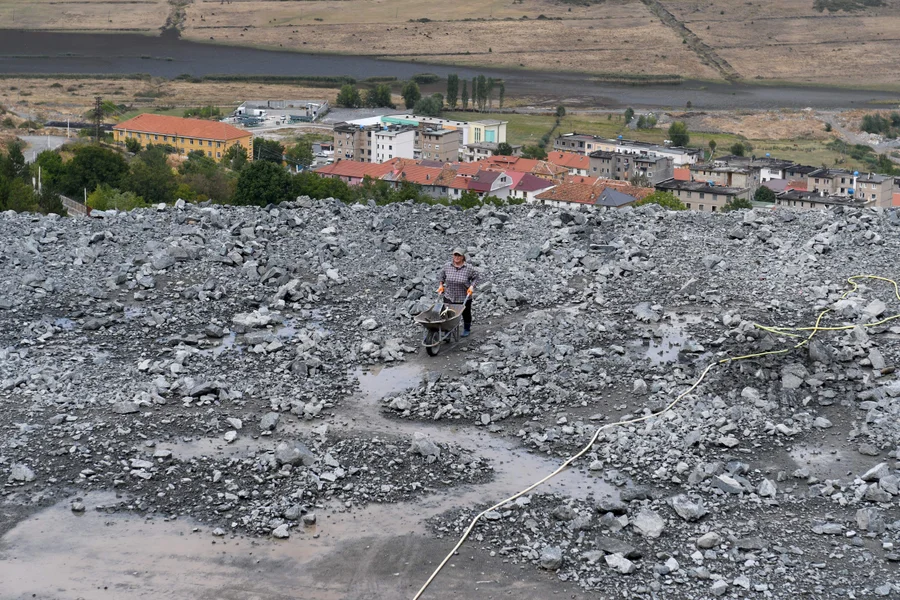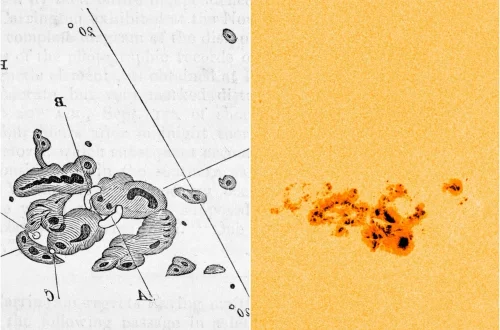
‘Hydrogen Fever’ Erupts after Discoveries of Large Deposits of the Clean Gas
This year, in a chromite mine in Albania, Laurent Truche, a geochemist at the University of the Alps in Grenoble, France, and his colleagues discovered gold, or more precisely another element on the periodic table. Nearly a kilometer below the surface, they found a hydrogen seep so strong it turned a murky drainage pool into something resembling a Jacuzzi. Trush had never seen a hydrogen bubble this big. “It was really intense,” he said.
Natural hydrogen is the molecular form of hydrogen (H2) is produced through natural processes. It forms deep within the Earth and can become trapped on its way to the surface, creating a buildup of gas. Confusingly, natural hydrogen, also known as “golden”, “white” or “geologic” hydrogen, can provide us with a cleaner energy source than other types of hydrogen because no carbon dioxide is involved in the process of producing it. There is no carbon involved in the process of generating hydrogen (of course, drilling and distribution still involves some carbon dioxide emissions). A recent study estimated the greenhouse gas intensity of natural hydrogen to be 0.4 kilograms of CO2 equivalent per kilogram (kg CO2eq/kg), which is much lower than the 22-26 kg kg CO2e/kg of black hydrogen (produced from coal) or the 10-14 kg CO2e/kg of blue hydrogen (produced from natural gas).

Thirty years ago, scientists believed that naturally occurring hydrogen deposits simply did not exist. What is known, however, is that hydrogen can be produced deep within our planet through a process called serpentinization, which occurs when water reaches iron-rich rocks from the mantle. The reaction alters the rock and releases hydrogen from the water molecules. Other processes are known to produce hydrogen, such as radiolysis – the splitting of water molecules by radiation from uranium and other radioactive elements within the Earth’s crust. However, it was taken for granted that hydrogen, being the lightest molecule, would seep into rock formations and escape into the atmosphere, rather than pooling in reservoirs as oil does. Scientists also recognized that hydrogen is easily consumed by microbes, which would theoretically make a reservoir even less likely. “I spent 30 years in oil and gas research and very much had the mindset that, yes, the hydrogen is there, but you’re never going to accumulate it,” said Jeffrey Ellis, a geochemist with the U.S. Geological Survey.
The Albanian discovery is the latest in a series of similar discoveries that have recently galvanized interest in natural hydrogen. When geologists discovered natural hydrogen last year in an old coal mine beneath Folschviller, a run-down mining town in northern France, the local media were hopeful. Some called it “the new gasoline”. Others called it a “game changer”. The word “Eldorado” was also uttered. But Trush issued a warning, calling the enthusiasm for the discoveries “hydrogen fever.” “In one sense, it’s great because it attracts attention, funding and forward momentum,” he added. But in another sense, it’s also a kind of Wild West – with a lot of hyperbole.
Then, in 1987, workers attempting to drill a water well in the village of Bourakébougou in Mali noticed an unusual breeze blowing out of the hole. When one of the workers lit a cigarette, the gas exploded into a bright flame – the breeze became almost pure hydrogen. The well was soon cemented shut for safety reasons, and it came back to life in 2012 when a Canadian company, now known as Hydroma, began burning hydrogen to power the local population – the first such production site in the world. A few years later, Hydroma began drilling around Bourakébougou and discovered more deposits containing natural hydrogen.
While scientists consider Mali’s discovery to be proof that natural hydrogen accumulations are indeed possible, there are other indications of their existence. In Turkey, a site known as the Chimaera seep, located under a temple dedicated to Hephaestus, the Greek god of fire, has been emitting hydrogen since ancient times. In Australia, oil wells drilled on Kangaroo Island in the 1920s and 1930s have been found to produce high levels of hydrogen – as much as 84 percent of the total composition of the recovered gas. Now, after Truche and his colleagues analyzed the geology of the Albanian site, their findings add to a growing body of data suggesting that natural hydrogen may be trapped underground. “They’ve provided some very compelling evidence that gas accumulation has been around for a long time,” Ellis said.




